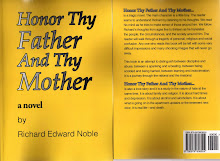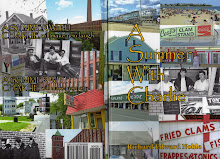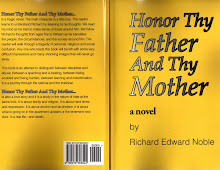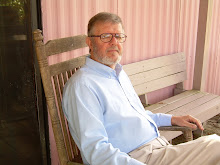
Bread and Roses, 1912 Textile Mill Strike
Lawrence, Mass. – My Hometown
by Richard E. Noble
On Tuesday, January 11, 1912 in the industrial mill town of Lawrence Massachusetts, a group of Polish Immigrant woman who were working at the Everett mills on Union Street, shut down their machines and walked off the job. Within hours 25,000 co-workers had joined them in what would become the biggest textile strike that had ever been staged in America.
Lawrence, Massachusetts was a planned community, built specifically for the textile industry in 1845. Its main attraction was the availability of water power, primarily the Merrimack River and its many tributaries. Like its sister city up the river, Lowell, it was going to be a utopian village designed on the model of New Lanark, established in Scotland by the social reformer Robert Owen. But, by the year 1912, the dream had faded. Far from being an industrial paradise, both Lawrence and Lowell by the year 1912 were considered by many to be “industrial blots, pestiferous and diseased”, sustained on the starving, over-worked backs of woman and children. The mill owners had evolved in sixty some years, from humanitarian and utopian idealists to Robber Barons.
Lawrence, known as the “Immigrant City” was at the time of the Bread and Roses Strike about 85,000 strong. Thirty-seven percent of that 85,000 had arrived in the previous ten years. Most had been lured to the area by advertisements abroad, placed by mill agents, touting streets of gold and money and jobs in abundance for everyone. More than half the population of Lawrence was directly involved in mill work. The population breakdown went something as follows; 21,000 Irish, 12,000 Franco American, 8000, Italians, 6,000 Germans, 3,000 Lithuanians and Polish, 2,700 Syrians, 2,500 European Jews, 2,300 Scots, and a small group of blacks who had settled there after the Civil War. There were only 3,000 of its 85,000 residents that were born in the United States. Many notables visiting the Lawrence area were shocked by the conditions of squalor and poverty.
Elizabeth Shapleigh, a physician, had conducted a mortality study. She found that every third person standing in her line in Lawrence was dying from tuberculosis directly related to dust and fiber and breathing conditions at the mills. One third of the mill workers died before the age of twenty five, and a large number of children who had started working in the mills before becoming teenagers didn’t survive their teenage years. Seventy five percent of the workers in the Lawrence mills, ended up dying from mill related causes.
The average mill worker earned about $9.00 a week. The average rent was $3.00 per week. Most workers were barely getting by, many were starving. The tenements were stacking people up, six hundred to the acre. At Fall River sixteen tenements housed 500 human beings. They had one privy. In Lowell the tenants had to carry their garbage and excrement to a deposit station. Miscarriages were everyday. Conditions in Manchester, New Hampshire were said to be even worse than the horror reported in the working class neighborhoods of Manchester, England. American workers started working at an earlier age and died a decade sooner.
A worker could be fined 25 cents for being five minutes late; one dollar for eating at the loom; 25 cents for taking time to wash one’s hands, doing inadequate work, sitting down or taking a drink of water. Some mill owners charged the workers for drinking water. Paydays were often irregular. An employee might wait 50 days to finally get paid for thirty. In some New England areas some workers were paid in company script redeemable at company stores. It was common practice to lock workers in their working area rooms. Crippling injuries were common place and incurable diseases precipitated by working conditions were everywhere.
Camella Teoli testified before congress about working conditions in the mills. Miss Teoli was barely a teenager when her hair was caught in one of the machines and her scalp was ripped off. She spent seven months in the hospital recuperating,.. .without pay.
Most kids worked in the mills and didn’t attend school. On an average day in New Jersey, of children registered for classes, you could count on over a million absentees. The ratio was, most likely, similar for Lawrence. Just up the road from Lawrence, in North Andover, mill owners were paying the “better class workers” who were of Irish, Scotch and English descent, double the wages of the more recent, Polish, Lithuanian, Syrian, French Canadian and Slave immigrant mill workers in Lawrence.
The state legislature had finally stepped in to try and assist the desperate and helpless woman and children working in the mills. They passed a law limiting woman, and children under sixteen, to a maximum of 54 hours per week. This was a two hour reduction from the previous average of 56 hours per week. The mill owners obeyed the law but added a touch or two of their own. Since the mills could not run without the woman and children who comprised over 50% of the worker population, they cut all worker hours to 54. They increased the production so that the same output would be accomplished in the shorter hours. And they deducted two hours pay from everyone’s pay checks. Naturally they were not going to pay people for working 56 hours when they had only worked 54. At the same time the American Woolen Company, the largest group of mills in the area, was paying its share holders 12% on their investment. Shares that had been bought at $75 were worth $3,800 in just a few years. William “Billy” Wood who owned American Woolen claimed to have so many automobiles that he couldn’t keep track of them. In 1910 the American Woolen Company announced profits of $3,995,000.
The Wood Mill was built in 1906. Each of the wings of its main building stretched for a half mile along the Merrimack River and canals. Wood also owned the Ayer, the Washington and the Prospect. Eventually, he owned mills all over the nation.
Billy Wood began his career as a office boy in the Wamsutta Cotton Mills in New Bedford. At age twenty-eight he went to the Washington Mills in Lawrence. He became a salesman for the company and by 1880 was earning $25,000 a year. His fortunes continued to grow, especially after marring Mister Ayer’ s daughter.
The American Woolen Company had thirteen thousand employees, itself. Lawrence was the worsted capital of the world. It was stated that Lawrence “weaved the worsteds for the world”. Worsted is made from weaving wool not cotton. At the time of the Lawrence strike 400,000 men, woman and children worked in the Textile mills of New England. The Boston Associates, the Essex Company, the American Woolen Company and a few other investment trusts were comprised of some of the richest men in America.
The two hour cut in pay amounted to just 32 cents. But 32 cents could buy a worker between three and ten loves of bread. “We will break this strike,” Lawrence mayor Scanlon announced. “or we will break the striker’s heads.” On Saturday, January 13, strike organizers Joseph Ettor and Arturo Giovannetti from the I.W.W., International Workers of the World, arrived. Scanlon called Governor Eugene Foss, a mill owner himself, for state troops. Five hundred soldiers were immediately sent into the city. Students from Harvard University were given extra credit toward their final exams to go down, and “have a fling at those people”. Harvard University president at that time was A. Lawrence Lowell.
Four days after the strike began most mills had armed guards and mill owners were advertising for “scabs”. The natives who were for the most part Irish, didn’t participate in the strike. Father James O’Reilly of St. Mary’s church who had in the past been a supporter of the mill workers spoke out against the strike. The Catholic church did not like the Socialist-Communist-atheistic I.W.W. Some of the workers at the mills were represented by the United Textile Workers. Their leader was John Golden. Golden and Samuel Gompers of the A.F of L. spoke out against the I.W.W. and their infamous leader, “one eyed” Big Bill Haywood. Both Golden and Gompers headed unions that supported craftsmen only. Both groups had been called upon in the past to intercede for mill workers, but were always a no-show.
The I.W.W. supported laborers as well as craftsmen, blacks as well as whites, and woman. The A.F. of L. did not support the strike and Golden actually advised his members to break the picket lines and go back to work. Though most English speaking workers and members of the craft unions did not support the strike, they didn’t break the picket lines. They simply stayed home and didn’t report for work. The A.F.of L., the United Textile Workers, the Catholic Church, local priests, the Irish, and native born English speaking Lawrencians didn’t support the strike. But on January 24 when Big Bill Haywood and Elizabeth Gurley Flynn made their first appearance two weeks into the strike, over fifteen thousand mill workers greeted them down at the Common, a fifteen acre park, in the center of the town. It was said to be the largest gathering in the history of Lawrence.
Although the churches, and craft unions, and others didn’t support the strike, many did help in setting up soup kitchens and providing general aid to the strikers. The mill owners hired guards, strike breakers and hoodlums to instigate violence and stir up trouble that could be blamed on the workers. The strike leaders advised the workers to refrain from violence, because if blood is shed, it will most likely be your own, they were told.
Mayor Scanlon made further requests for troop support from Governor Foss. One thousand two hundred National Guardsmen were sent in. They housed themselves in the mills, set up search lights and placed machine guns on the factory’s rooftops. The bosses had also installed electric-wire fences and armed loyal employees. Lawrence was a city under siege.
On January 15 eight thousand strikers marched through a snow storm to stop “scabs” from entering the Washington and Wood mills. By the time the strikers got to the Prospect Mill they were fifteen thousand in number. At the Atlantic and Pacific mills the militia finally stopped them with high pressure fire hoses. At another gathering National Guardsmen waded into the crowd and the strikers had their first death. A young Syrian youth, about twenty years of age, by the name of John Ramey was bayoneted in the back. He spent two weeks in the hospital and then died.
The Bread and Roses strike of 1912 goes down into the history books for a number of reasons. One was because of the prominent part played in it by women. Helen Gurly Flynn, originally from Concord New Hampshire was, as mentioned, a major force in the I.W.W. But there were a heep of others; Josephine Lis, Annie Welzenback, Sarah Bagley, Jennie Collins and Mary Kerney O’Sullivan to mention but a few. But the regular working women and working mothers were the real heroes. Prosecutor Douglas Campbell commented, “It takes but one man to overcome ten men, but it requires ten men to manage a single woman.” The women laid down on the sidewalks and in the streets. They were pushed shoved and clubbed. Police Chief John J. Sullivan defended the violence of his bullying patrolmen by stating that the women had it coming to them. Headlines in the local newspapers read, humiliatingly; Man intimidated by women pickets, Woman fined 20 dollars for assaulting and officer, Jennie Radsiarlowitz convicted for intimidating man. - Finally the police outdid themselves in the most shocking embarrassment of all.
Due to the growing escalation in violence, striking parents, at the suggestion of union leaders, decided to send their small children away from the area. It was Washington’s birthday. The small children being packed off at the train station created such a stir of sympathetic, union publicity that marshals declared such action illegal. Colonel Sweeter of the National Guard had placed Lawrence virtually under marshal law. They charged the parents with “neglect”. One hundred and fifty children had been sent to New York and Margaret Sanger, later to become famous as organizer of the National Birth Control League, organized the committee to supervise the children.
News of the Lawrence strike spawned huge demonstrations in support of the strikers in London, Rome, Bern and Budapest. On Saturday, February 24 the woman of Lawrence defied the Marshals order and brought more of their children down to the train station on Broadway. When the woman tried to put their children onto the train the police wadded into them with their billyclubs. They struck children and women alike. Bertha Crouse, a pregnant striker, was clubbed into unconsciousness and consequently lost her baby.
In another incident Annie Lopizzo was shot and killed. Witnesses said that it was policeman Oscar Benoit who had done the killing. Benoit had been stabbed and immediately began shooting into the crowd. The police arrested Joseph Caruso as the murderer, then picked up Ettor and Geovannitti as accessories. Ettor and Geovannetti were accessories because they were the leaders of the “illegal strike conspiracy”, organized in restraint of trade and the obstruction of private property rights, as outlined in the Sherman Anti-trust Act. Neither men were present at the scene of the crime. Caruso, as it turns out, was not present at the scene of the crime, either. But the three men were not lonely at the city jail and elsewhere. Hundreds of strikers, many of them women, had
been arrested and were cooling their heels with broken bones and busted heads.
Helen Keller came to Lawrence and spoke out in favor of the release of Ettor and Geovannetti. A stash of dynamite had also showed up, mysteriously, in a shoe store next to where Joseph Ettor picked up his mail. An investigation ensued and Ettor and Giovannetti were cleared of any “dynamite” charges when it was discovered that an ex-alderman and son of a former mayor by the name of John Breen had actually planted the dynamite in the shoe store himself. This admission of guilt was promted from Mister Breen when it was discovered that he had wrapped the dynamite in a subscription magazine or newspaper with his name and address printed on the material.
All this negative publicity caused “Captain Billy” Wood to have a change of heart. He offered the workers a 5% wage increase even though the company, according to him, was going through stressful times and making nothing in terms of profit. A few days later it was announced that American Woolen had a surplus of 11.5 million and would be paying dividends to its shareholders of 8%. Captain Billy was also charged in the dynamite conspiracy. Supposedly, Wood had hired Breen to do the dirty work. Breen had an unexplainable payment receipt from Mister Wood in his possession. Breen was eventually fined $500 for his part in the shenanigans. The charges against Captain Billy were dismissed. Ettor and Geovannetti remained in jail even after the strike was settled.
After two months the strike finally ended. All the negative publicity; the beating of the women and children at the train station; the beating and forced abortion of Burtha Crouse; the killings of Anna Lopizzo and John Ramy; the dynamite affair and the Breen confession; the unexplained check paid to Breen from Billy Wood; all these events had undermined the mill owners objectives. They gave the workers pay raises between 10% and 20%; they hired strikers back without reprisals; and they eliminated their corrupt piecework practices.
The Bread and Roses Strike not only sent shivers throughout the local business community, but it panicked mill owners throughout the nation. Textile workers and industrial workers all over the nation received wage increases. The Bread and Roses Strike in Lawrence, Massachusetts goes down in the history books as a turning point in labor management relations. Nevertheless, many strikers who were imprisoned and charged unconstitutionally, without trial or representation, were forgotten in their jail cells. Some remained in jail for up to two years.
Ettor and Geovannetti remained in jail also. The charge of conspiracy and accessories to murder remained against them. The penalty was death. Big Bill Haywood immediately organized the mill workers on the two men’s behalf. In September a grand jury secretly indicted Haywood and several other strike leaders under similar charges; Haywood left Massachusetts. After eight months of postponements the state finally set a date for the trial, September 30.
On September 15, 1912 there was to be a rally on behalf of Ettor and Geovannetti on the Boston Common. Rumor had it that Haywood was going to sneak into town and make a speech at the rally. The Boston Police were alerted. Big Bill made his appearance successfully. He gave a riveting speech to a crowd of over twenty thousand workers. Haywood demanded that Ettor and Geovannetti be released, if not, a strike would be re-established. The jail doors would open or the mill doors would close, chanted Haywood. After his speech, Haywood inadvertently slipped into the back seat of a waiting unmarked police car instead of his get away car. He was arrested and booked. What was he being charged with, the newspaper men asked him. “They tell me I’m charged with conspiracy. I don’t really know what kind of conspiracy but I think it is a conspiracy to get more to eat.”
Haywood was now on trial once again for his life. The plot failed. In a trial that took place in Salem, Massachusetts, charges were dropped for lack of evidence and all four men were finally released after eleven months of negotiating. The victory of the belligerent and warlike I.W.W. sent mill owners and industrialists running to more accommodating and sympathetic union organizations. The A.F. of L., the United Textile Workers and others had a line of businessmen at their doors. Many businessmen even solicited the more non-violent unions to come in and organize their workers. The times, they were a changing.
1 Belles of New England, William Moran.
2 The Rise of Industrial America, Page Smith.
3 Roughneck, The Life and Times of Big Bill Haywood, Peter Carlson.
4 Roughneck, The Life and Times of Big Bill Haywood, Peter Carlson.
5 Roughneck, Peter Carlson.
6 Books used in the research of this essay include; “The Belles of New England”, William Moran; “Roughneck”, Peter Carlson; “American Economic History”, Harold Underwood Faulkner; “The Growth of the American Republic”, Morrison and Commager; “Labor Problems in American Industry”, Carroll R. Daugherty; Bread and Roses, 1912; “The Robber Barons”, Matthew Josephson; “A History of American Labor”, Joseph G. Rayback; “The Rise of Industrial America”, Page Smith; “Images of America”, Volume I and II, Ken Skulski, Eartha Dengler, Katherine Khalife; “The Beards New Basic History of the United States”, Charles A., Mary R. and William Beard: “The Course of Industrial Decline”, The Boott Cotton Mills of Lowell, Massachusetts 1835-1955, Laurence F. Gross; “The Rebel Girl”, Elizabeth Gurley Flynn; “Hobo-ing
America”, Richard Edward Noble.






































No comments:
Post a Comment